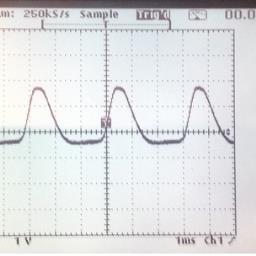Hi Gordon,
I agree - I think that if the rate of change (delta) was separately derived, it should be possible to use this to apply harmonic changes to the sound.
If the above was done, it might even be possible to correct somewhat for sluggish front-end response - as in, a detected delta could be 'amplified' and applied to the audio engine / processor - but to be honest, I think that would probably be more destructive to playability than of benefit.
The thing about direct heterodyning is that any change in any cycle of the HF (Variable) oscillator is instantly reflected on the audio waveform - at say 250kHz, this is an AUDIO update every 4us - but in fact, its even faster than this, it is, quite literally, instant - because even the HF waveform will be distorting as the capacitance changes.
I have no idea at all how much anyone can hear of the harmonic changes that occur to the audio waveform - Any change to harmonics above the instruments audio roll-off frequency will obviously be lost, so I doubt that anything above 10kHz will be of any significance.. and from this we can say that updating the audio waveform every ~100us should allow everything that can be heard, to be heard.
But at the front end, these changes need to be 'picked up' in order for them to be used... I do not actually see any way to differentiate between different gestural actions fast enough to allow their use in a theremin.. Any such processing will take time, which will bring us back to theremini cookoo land (although in the thereminis 100ms lag, you should be able to do a hell of a lot of processing! ;-)
For playability one needs faster than 10ms, and I think if one has this, it may be possible to separately derive delta and use this to accentuate harmonic changes - I think this could be really interesting in fact.. having vibrato for example that had a greater influence on harmonic content as the vibrato frequency increased (it will have this anyway on a heterodyning instrument, but would be interesting to mess with adjusting this relationship) .. But really, the most interesting would probably be to have 'amplified' delta acting with a fast (1ms or less) pitch tracking - I think that doing anything to the waveform which is not synchronous with some other 'cue' such as pitch or volume, will probably sound 'unnatural'.
(not that 'unnatural' is always bad ;-)
Ok - Lets get back to YOUR suggestion ;-) ... Sorry - I went off on one again..
"To me it suggests a way of improving digital emulation of theremin sounds as per, for example, the theremini, by considering not just the momentary frequency and amplitude of the theremin signal but also the rate of change of frequency and amplitude when synthesising the waveform."
If the front-end is fast enough, and one has a digital engine capable of updating the waveform during an audio cycle, then this should be possible.. A digital voice which only updated the audio every audio cycle or 1/2 cycle would not be able to synthesise the waveform.. This does not mean however that there is no solution.. If one had some digital 'processor' (distorter) that was fed the (digital or analogue) composite audio, and this block was fed a delta signal and could process (distort) the audio in real time as a function of the delta signal, then this could be a route..
I do not think the "theremini" should even be mentioned - there is absolutely no hope for 'improving' it other than by completely redesigning it - hardware and software.. The theremini isn't a toy one could turn into a theremin - it would be difficult (probably impossible) to even turn it into a playable toy theremin!
Fred



